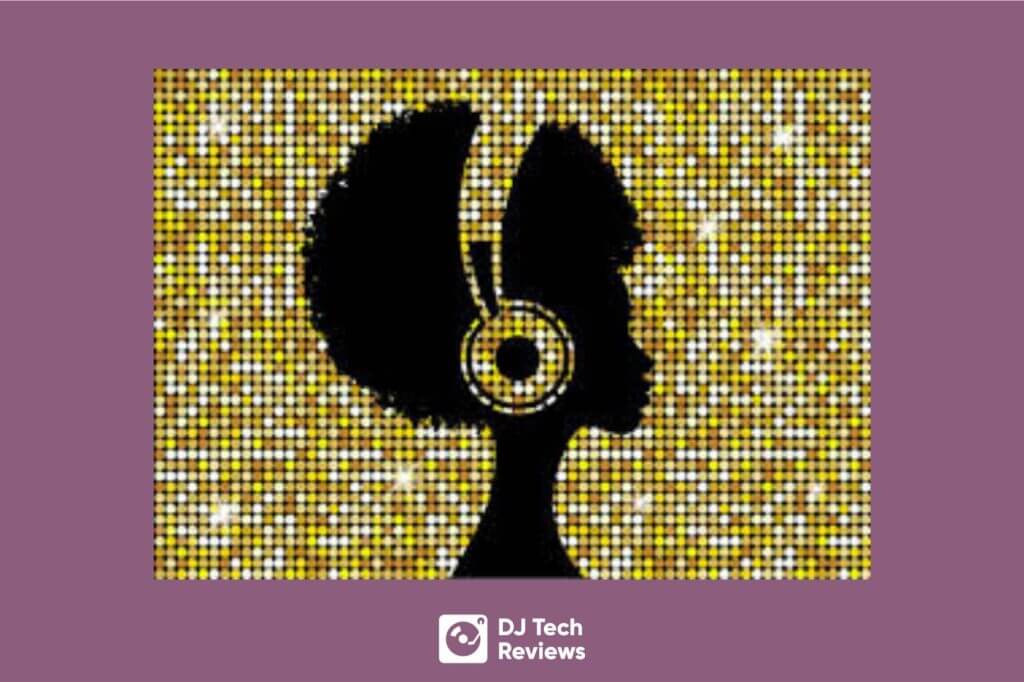When it comes to DJing, there is a surprisingly wide range of different genres one can get into. Back in the day, most people pretty much started and stopped with hip-hop.
Later House and Hardcore Rave came on the scene, followed by Deep House and Techno.
Keep in mind that these were just the big-name ones that made an impact. In reality, pretty much any type of music from any type of genre can be added to a DJ’s performance mix.
One of the genres that are growing in popularity is old-school Funk & Disco. However, for the longest time, this genre has been looked upon as notoriously difficult to mix or play with.
In this article, we’ll go over disco music and what has made it so challenging in the past.
We’ll also get into some popular ways you can best overcome those challenges so that you can blend some truly unique tracks together compared to virtually every other DJ out there.
How Do You Mix Disco Music (in short)
The biggest challenge when mixing disco-funk music is that disco songs are very difficult to beat match. As such, this requires much more attention to smooth transitioning techniques. Tracks are often unquantized and very irregular. Because of this, you will need a very good understanding and knowledge of your songs and how they are individually structured.

Read this next: How to DJ Deep House (Just Like a Headliner)
Unique Challenges With Mixing Disco Music
One question you may be asking is, “if disco music is almost as old as DJing, why do you not see it being mixed much?”
Well, there are a few reasons for this, but it all boils down to the fact that classic disco music is much more difficult to mix and beatmatch when compared to hip-hop, EDM, or tech music.
Generally, most disco tracks have a much shorter intro and outro when compared to house music and other DJ go-to genres. In addition, early disco was performed by a live drummer and would often result in a BPM that wildly fluctuated.
These factors were incredibly trying for most DJs, to the point that most wouldn’t even want to waste their time, instead of sticking to the more tried and true areas at the time.
Here, we’ll go over each of these factors in detail to explain just how serious they were at the time.
Challenge #1. Shorter Intro & Outro
The first big challenge when it came to mixing a disco track was its intro and outro.
As it was, unless you were using a “disco version” of a track, you were dealing with an incredibly short intro and outro to play with. This meant that you’d have virtually no time to jump in or out of a track when mixing.
What most beginner DJs and casual fans aren’t aware of is the fact that most mixes require at least some way to seamlessly transition into a song from the previous track.
If you can make it seem like one continuous track, you can ultimately create a very jarring and disjointed DJ experience, both for yourself and the audience.
As such, for the longest time, DJs would have to decide whether they’d try to go for that short loop or make a point of investing in the larger disco version of tracks. In most cases, they simply felt the juice wasn’t worth the squeeze, and ignored the genre entirely as a result.
Challenge #2. Having A Live Drummer
The second big hassle for DJs, when it came to mixing disco music, is the fact that until relatively recently (the 1980s) drums were operated by live drummers.
Today, most artists and music producers will use drum machines to set up the drum kick timing, but at that time they had to rely on live drummer recordings.
This ultimately would result in a wild and off-kilt tempo that couldn’t be reliably counted on.
Having a fluctuating and off-kilt tempo meant it would often be far too difficult for DJs to track and keep in sync two separate tunes, especially if going by ear – which was how things were done at that time.

Challenge #3. Sporadic BPM Range
Lastly, when compared to house tracks or EDMs, disco and funk music has an almost comedic level of range and variety from track to track.
Whereas virtually all house or deep house tracks are going to have a range between 123 and 128 beats per minute (bpm), disco-funk tracks can go anywhere from being 95 bpm to 130 bpm.
To make matters worse, there is no rhyme or particular reason for why one track will have 95 bpm while the other will have 130.
This makes every track a crapshoot on whether it will or won’t be close enough to the previous track, ultimately making beat mixing and matching a virtual impossibility.
Top Transitions To Use
The main thing you need to understand is that disco songs and music are very difficult to beatmatch.
As such, layering and mixing, both heavily reliant on matching, are similarly out of the picture. Still, just because beatmatching is out doesn’t mean disco tracks “can’t” be played by DJs.
It just means you’ll need to use a different type of transition method.
Below are three useful transition methods to consider using, all being great to play with and use. They include using sync, cutting a track, and short-mixing. Each of these options is worth considering, with a ton of great effects.
1. Use Sync
Firstly, if you aren’t sure of your skills or are a little new to the genre or Djing as a whole one of the best solutions for transition is none other than using the much-debated Sync button.
This technology works by assuming both tracks are already beatgridded before locking their beats together.
This means that, no matter how much either track’s tempo changes, the two songs will essentially turn into one track.
As with the one-bar beatmix, synced beatmix works by tracking the BPM of both tracks, only working if it is close enough so that there isn’t any incoming pitching in either direction.
How To Use Sync
To use synched beatmix, you’ll first need to cue up the incoming track after its first beat.
From there, as the outgoing track is nearing its end, you’ll need to bring the channel fader to around 60 to 75% up on the incoming track before activating “Sync” on both decks.
Once the outgoing track’s phrase has come to an end, press “Play” on the incoming track. You will then gradually move the incoming track’s channel fader continually further along while simultaneously lowering the outgoing track’s.
Then, once the transition is over, make sure you’ve deactivated Sync across both decks, and you will have officially beat mixed a disco-funk track.
It really is that simple. But of course, practice this method to master it.
2. Cutting
Next up is the popular transition known as cutting.
Track cutting is arguably the easiest method of jumping from one song to the other. Not only that, but it is also a great option when dealing with tracks that have different BPMs – something that is quite rare but more prominent in Funk and Disco music.
How To Track Cut
To properly utilize track cutting, you’ll want to first cue up the secondary incoming track along with its first beat, also known as the first beat of its phrase.
You’ll want to shoot for doing this wherever the cutting best makes sense.
Once you’ve finished cueing up the incoming track, you’ll want to bring the channel fader all the way up for it as the outgoing track is nearing its end.
Then, as you’re nearing the end of the outgoing track’s phrase, press the “Play” button for the incoming track while simultaneously closing out the outgoing track’s channel fader.
Track cutting is a perfectly acceptable method of transitioning out between two separate tracks regardless of their genre or tempo.
So it is ideal for Disco sounds!

2. Short Mixing
The last method we would suggest is to short mix.
With this, you can beatmatch an incoming track to its outgoing one while overlaying their beats on top of the other throughout a short transition period.
This method of transition only really works if the BPM of one track isn’t too far apart from the other.
Generally, they should be no more than 4 beats apart in either direction (either 4 bpm forward or behind).
If they are any more than that, you run the risk of the transition coming across pitched, with the sound tuning too much up or down, creating an all-around weird sound. That is a big thing to avoid!
How To Shortmix
To short mix (or one-bar beat-mix) you’ll need to beatmatch the incoming and outgoing tracks with one another. While the process doesn’t need to be perfect, it should be a close match!
This is because the transitions are naturally going to be fairly short, with the live drumming aspect already being a potential issue anyway.
Afterward, you’ll need to cue up the incoming track to its first beat before bringing the channel fader all the way up on the incoming track right as the outgoing track nears its end.
From there, simply press the “Play” button on the incoming track before bringing the outgoing track’s channel fader down.
Another skill set to be practiced, practiced, and practiced some more!
PRACTICE IS KING, a bit like John Travolta here!
Read this next: Essential DJing Transitions (Made Simple!)
How Do You Mix Disco Music: Takeaway
Once upon a time, DJing with disco music tracks was something just not worth your time.
Simply put, what you were getting just was not worth the amount of stress you’d have to put in for it to not sound horrible.
That isn’t the case today.
By understanding that disco tracks aren’t the impossible beast that they once were, and understanding that there are viable methods you can use to beatmatch them, you can add disco tracks into your DJing sets, giving you an ultimately unique setup compared to all of your performing contemporaries.
Good luck and remain FUNKY!




